As China’s high-speed railway technologies earn a reputation in Southeast Asia, Vietnam is set to strengthen its cooperation with China’s Belt and Road Initiative on cross-border railway projects
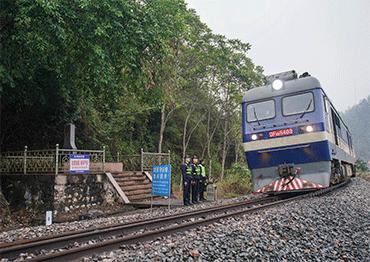
A train from Nanning, Guangxi Zhuang Autonomous Region, on the border with Vietnam at Guangxi’s Chongzuo Station, January 30, 2024 (Photo by VCG)
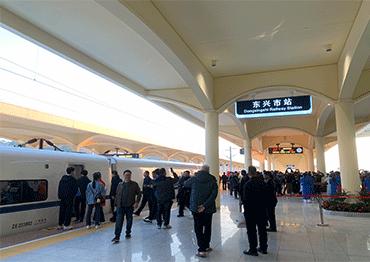
Passengers wait for the high-speed train from Dongxing to Fangchenggang in Guangxi Zhuang Autonomous Region, December 27, 2023. The first high speed railway linking the two border cities went into operation on December 23, 2023 (Photo by VCG)
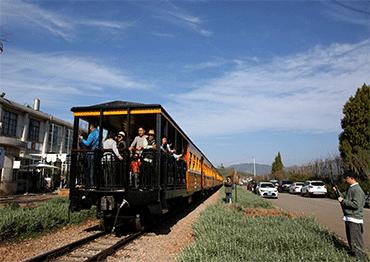
The China-Vietnam Railway, which connects Kunming in Yunnan Province with Haiphong in Vietnam, was launched in 1910, the first railway in southwestern China. (Photo by VCG)
Vietnam’s Ministry of Planning and Investment announced in early April that the country plans to build two high-speed railway lines linking Hanoi, the country’s capital, with China before 2030. One planned high-speed line would run from Vietnam’s port cities of Haiphong and Quang Ninh through Hanoi to Lao Cai Province, which borders China’s Yunnan Province. The other would run from Hanoi to Lang Son Province, which borders China’s Guangxi Zhuang Autonomous Region.
Prior to the announcement, Vietnam said it was seeking to learn from China how to develop its first high-speed railway network and had sent officials to work with Chinese railway companies. The development is widely seen as further evidence that Vietnam is ending its decades-long hesitation on integrating its railway system to that of China.
Gauged Plans
China has long envisioned a pan-Asia railway that links southwestern China to Singapore. In 2013, China launched its ambitious Belt and Road Initiative (BRI) focusing on infrastructure building and regional connectivity, with Southeast Asia forming a very important part.
But compared to other countries in Southeast Asia, Vietnam has been reluctant to cooperate with China on building cross-border rail, mostly due to security concerns. China and Vietnam fought a limited but bloody border war in the late 1970s and early 1980s. Bilateral relations normalized in 1991 and the two countries agreed to establish a comprehensive strategic partnership in 2008, though territorial and maritime disputes over the South China Sea continue.
In a high-profile visit by Chinese President Xi Jinping to Hanoi in December 2023, the two countries signed dozens of cooperation agreements and agreed to upgrade their relationship to build “a community with a shared future that carries strategic significance,” which Vietnam’s state media called a “historical milestone” in China-Vietnam relations.
In a joint statement released during the visit, China and Vietnam agreed to better manage their differences and take bilateral ties to a new stage of “greater political mutual trust” and “more substantive security cooperation.” The joint statement mentioned several rail projects and initiatives, including accelerating the construction of a standard-gauge railway to connect the Vietnamese northern border city of Lao Cai, Hanoi and the Vietnamese port of Haiphong, and stepping up research on the Dong Dang standard-gauge railway line, connecting the Vietnamese border city of Mong Cai, Hanoi, Ha Long and Haiphong.
A major obstacle for railway connectivity is that Vietnam’s railways, first constructed in the late 19th century under French colonial rule, adopted the meter-gauge, which is different from the standard gauge railway (SGR) of 1,435mm used in China, as well as other countries. The recent developments signal that Vietnam may have finally decided to fully adopt SGR, which would substantially increase its railway connectivity with China.
The two countries are already connected via two old railway lines, linking Hanoi to Nanning, capital of China’s Guangxi Zhuang Autonomous Region, and another to Kunming, capital of China’s Yunnan Province. On the Vietnamese side, the railway line that connects Hanoi to Dong Dang on the Guangxi border was built in the 1890s and 1900s by the French. In the 1950s and 1960s, with China’s help, the railway was renovated and converted into a dual gauge line with a single standard-gauge track and a meter-gauge track. The other railway line connecting Hanoi and Lao Cai to Kunming, was first built by the French at the start of the 20th century and remains a meter-gauge railway. The average speed of the two lines is about 50-60 kilometers per hour.
On the Chinese side, the railway lines have seen major upgrades. In Yunnan, China replaced the meter-gauge railway line originally built by the French linking Kunming and Vietnam with a new SGR line between the 1980s and 2010s. Under the BRI, China started to construct a high-speed line between Kunming and Hekou, a port town on the China-Vietnam border, in 2018 with a design speed of 250 kilometers per hour. In December 2022, the first section between Kunming and Mengzi in Yunnan opened to traffic.
Similar progress has been made in Guangxi, as China started constructing a high-speed line linking Nanning and Pingxiang on the border with Vietnam in 2018. The first section between Nanning and Chongzuo opened in December 2022. The entire Nanning-Pingxiang high-speed line is estimated to be fully operational by the end of 2025.
According to Zhou Shixin, a research fellow at the Shanghai Institute for International Studies, cross-border rail requires unified technologies and standards. Given the rapid development of China’s high-speed railway technologies, it is very likely that Vietnam will adopt China’s technologies.
Tracking Growth
Over the past few years, China has completed several flagship projects under the BRI in the region. In 2021, with China’s help, the semi-high-speed Laos-China Railway that connects Kunming to Lao capital Vientiane was completed. Spanning about 1,000 kilometers through mostly mountainous areas, the railway provides a solid boost to the economy of the landlocked country. Not only does it attract overland Chinese travelers to Laos and widen local business access to the Chinese market, it boosts domestic tourism. According to data released by Chinese customs, the cross-border freight volume of the China-Laos Railway reached 4.2 million tons in 2023, up 95 percent on the previous year.
Also with China’s help, the WHOOSH High-Speed Railway, which links Indonesia’s capital Jakarta and Bandung, the country���s fourth biggest city, started operating in October 2023. As the first high-speed train line in Southeast Asia with a maximum speed of 350 kilometers per hour, the project immediately became a source of national pride and quickly gained popularity, with the schedule increasing to 28 trips per day after just two weeks of operation. According to data from China Railway International Group, in the six months after it started operating on October 17, 2023, the Jakarta-Bandung High-Speed Railway has made 7,050 trips, safely traveling over 1.26 million kilometers and carrying a cumulative total of 2.56 million passengers. Demand on the Jakarta-Bandung line continues to grow.
“The inauguration and operation of both the China-Laos Railway and the Jakarta-Bandung high-speed railway have a strong demonstration effect, allowing Southeast Asian countries to experience China’s high-speed rail technology directly,” Zhou told NewsChina.
China has also participated in Vietnam’s railway construction projects. In November 2021, the 13-kilometer Cat Linh-Ha Dong metro line in Hanoi, Vietnam’s first urban light rail, went into cooperation.
Built by the China Railway Sixth Group, the metro line integrated the entire industrial chain with Chinese standards, including construction technology, equipment, materials, supervision and operational management.
Zhou said the project has been wellreceived and has become Hanoi’s new landmark, which helps to further boost Vietnam’s confidence in China’s railway technologies.
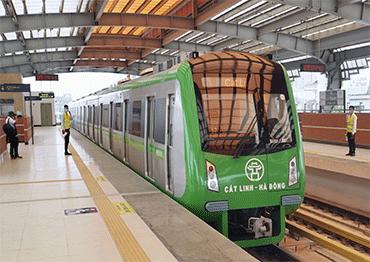
Vietnam’s first metro line, the China-built Cat Linh-Ha Dong line, begins commercial operation in Hanoi, November 6, 2021 (Photo by VCG)
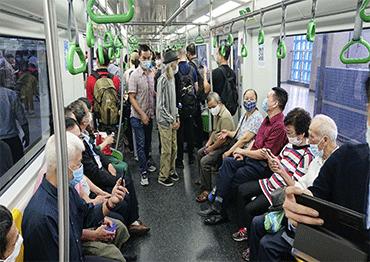
Passengers ride Vietnam’s first metro line in Hanoi, November 6, 2021 (Photo by VCG)
’North-South’ Project
According to Yang Hao, a professor at the School of Transportation Engineering, Beijing Jiaotong University, Vietnam’s recent proactive stance over highspeed rail cooperation with China is also due to the difficulties it encountered in its collaboration with Japan on highspeed rail.
Vietnam has long envisioned a 1,500-kilometer high-speed railway that would link Hanoi with business hub Ho Chi Minh City in the south. Known as the North-South high-speed railway, the project originally planned to adopt Japan’s Shinkansen high-speed rail technology. Between 2005 and 2010, the Vietnamese government launched a feasibility study in collaboration with a Vietnam-Japan joint venture.
But in June 2010, the proposal backed by Japanese companies was rejected by Vietnam’s National Assembly, largely due to its price tag of US$56 billion, which accounted for roughly half the country’s GDP in 2010.
With rapid economic development and greater demand for infrastructure in recent years, the project was revived. In February 2023, Vietnam’s Politburo set a specific goal to approve the project’s investment plan by 2025 and to commence construction between 2026 and 2030. Chinese companies have explicitly shown interest in undertaking the project. The project is now estimated to cost US$58.7 billion, about one-seventh of Vietnam’s GDP in 2023.
“For developing countries, the Chinese high-speed rail solution is the best and possibly the only solution,” Zhou said. Compared to Japan’s Shinkansen technology, China’s technology is more cost-effective and time efficient. “It has been quite a while since Japan saw extensive Shinkansen construction, and its engineering teams have significantly aged, making it difficult to ensure efficiency in all aspects,” Zhou added.
So far, Vietnam has yet to rule out the participation of Japanese companies. In a meeting between Japanese Prime Minister Kishida Fumio and Vietnamese Prime Minister Pham Minh Chinh in September 2023 on the sidelines of the ASEAN Summit in Jakarta, Chinh highlighted the North-South high-speed railway project, seeking Japan’s support to develop it.
According to Zhao Weihua, a professor and director of the Center for China’s Relations with Neighboring Countries at Fudan University, funding is the major challenge for Vietnam’s NorthSouth high-speed rail. Hanoi is trying to maximize its interests by leveraging the competition between China and Japan in the high-speed rail sector.
“Vietnam does not want to have a single country or company undertake the project, not only for security concerns but for maintenance issues,” Zhao was quoted as saying in an article published by domestic news outlet guancha.cn in December 2023. “The concern is that Vietnam might be offered a favorable price during the bidding process, but when it comes to maintenance later on, the price would be determined solely by one party, leading to endless expense.” Zhao believes that Vietnam’s preference is to divide the new North-South railway into several sections, which would be constructed by Chinese and Japanese companies separately, but adhering to uniform technical standards so both Chinese and Japanese companies can handle the maintenance later on.
Regarding funding, Zhao said that compared to China, Japan’s high-speed rail sector is unlikely to offer substantial financial support for Vietnam.
As for China, many in Vietnam have suggested that the two countries could adopt the investment model of the China-Laos Railway. According to the BRI official news portal, China is the main investor and constructor of the US$7.1 billion investment project. It is jointly operated by the Laos-China Railway Company, a joint venture between Chinese companies and Laos National Railway Corporation.
·But as the cost of Vietnam’s NorthSouth line is estimated to be about 10 times that of the China-Laos railway, Zhao said it is unlikely China can bear most of the financial burden of the project.
The result is that the Vietnamese government has now proposed a phased construction plan, which involves investment and construction divided into segments from 2025 to 2045. Zhao said that given Vietnam’s insufficient financial resources, prioritizing investments in stages according to urgency is a practical approach.
Great Potential
For many analysts, regardless of how Vietnam implements its railway plans, a cross-border railway line would bring tremendous opportunities to both Vietnam and China. China is Vietnam’s largest trade partner, accounting for over one-quarter of Vietnam’s total trade volume, and Vietnam is China’s biggest trade partner in Southeast Asia. According to data released by the Vietnamese government, bilateral trade in 2023 reached US$171.8 billion. In the first quarter of 2024, bilateral trade increased by 22 percent year-on-year to US$43.6 billion.
According to Cao Yujuan, director of the Institute of Macro-Economics at Guangxi Academy of Social Sciences, Vietnam’s planned high-speed railway extending from Hanoi to Lang Son Province bordering China’s Guangxi will traverse key economic zones in northern Vietnam, connecting industrial zones along the route to form a natural economic belt.
Cao said that Vietnam currently procures 54 percent of its machinery and equipment, 52 percent of its textile raw materials and 40 percent of its mobile phones and components from China, most passing through border ports in Guangxi. Currently, most bilateral trade still relies on roads, which have lower transport capacity. A railway would substantially lower transport costs and time, further boosting economic activities in both countries.
As for Vietnam’s North-South highspeed railway, Cao said that Vietnam could duplicate the success of China’s Beijing-Shanghai high-speed railway. With a similar length of about 1,300 kilometers that links China’s capital and its economic hub, the line is the most profitable in China.
“The railways can ensure the stability of cross-border supply chains, promote regional economic integration and naturally foster a transnational high-speed railway economic corridor, which would lay a solid foundation for the construction of a China-Vietnam community for a shared future,” Cao told NewsChina.
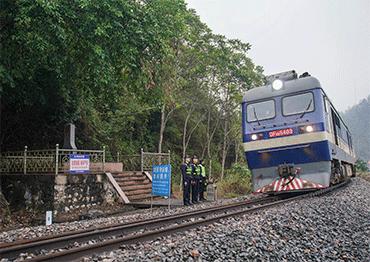
 Old Version
Old Version




